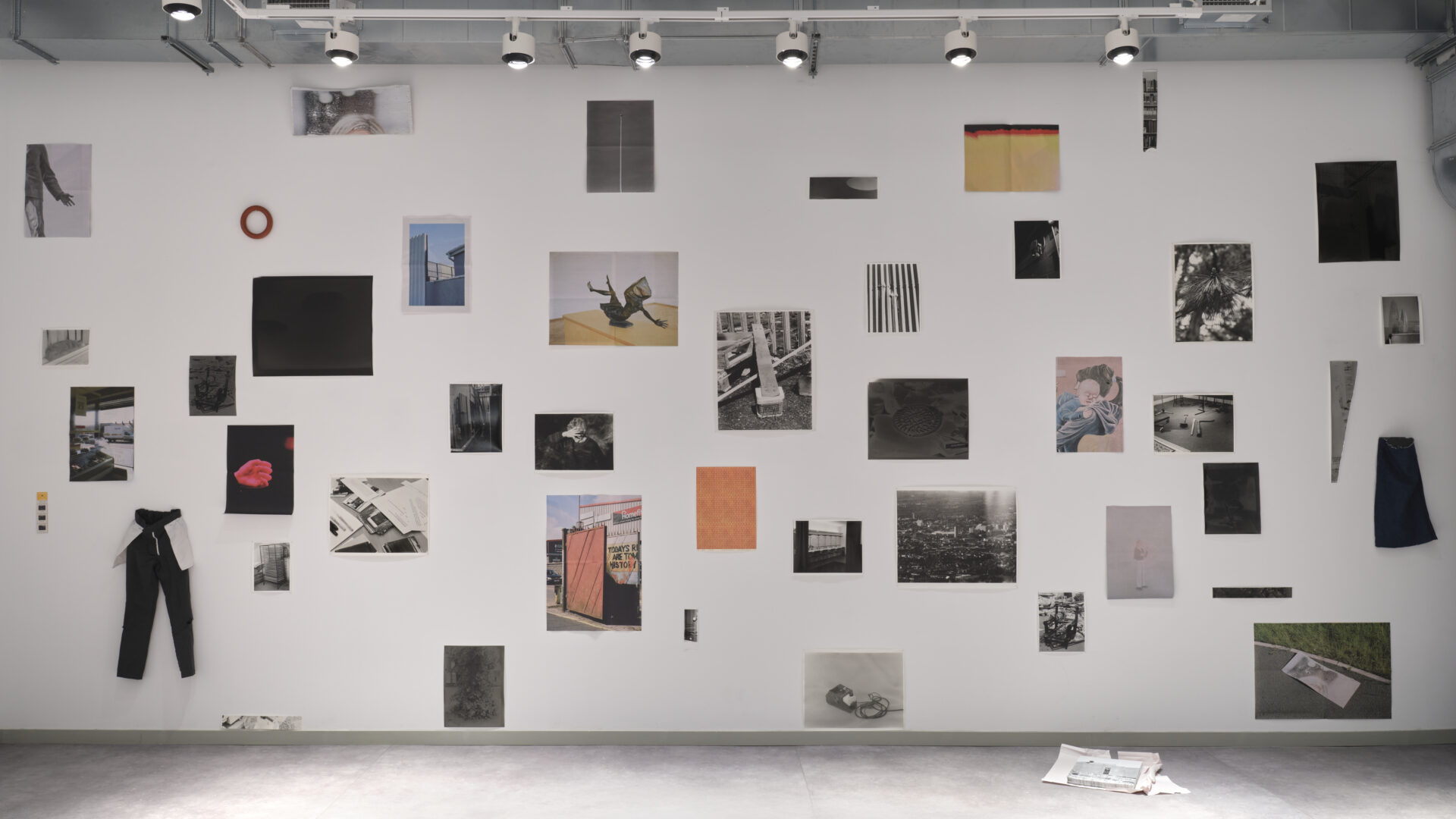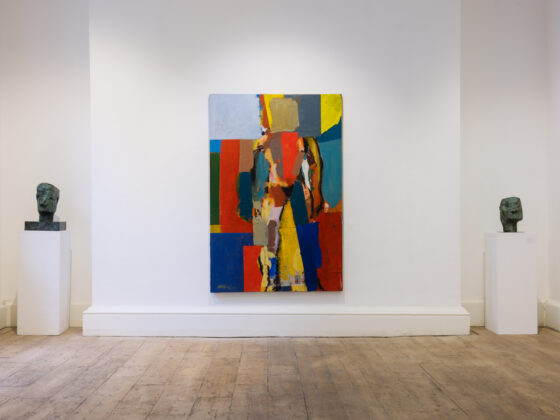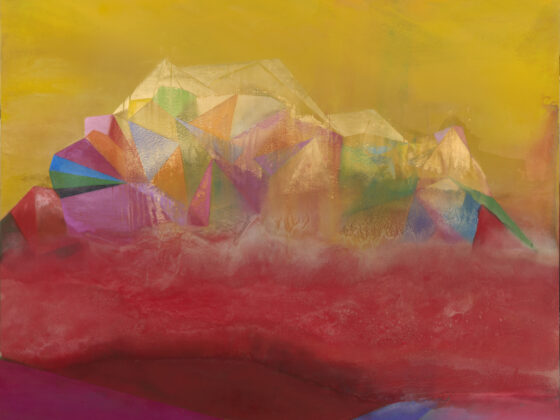Golden Thread Gallery
15 February – 29 March 2025
Maria Fusco and Margaret Salmon’s internationally acclaimed opera-film, History of the Present (2023), was shown in exhibition format at Golden Thread Gallery (GTG), Belfast, earlier this year. Mary Stevens, GTG Exhibition Officer, with Fusco and Salmon created a site-specific installation to accompany the film, which included artworks, research material from the GTG archive, personal artefacts, and ephemera. In a related coincidence, the gallery is currently located in the building that was once Craftworld, a shop Fusco remembers visiting as a child. This adds another layer of connection and intimacy to an exhibition that has deep resonance within the Belfast context.
Filmed in Belfast in 2022, using 35mm film and video, History of the Present opens with a close-up of opera singer, Héloïse Werner, whose improvisational vocal work is transforming archival recordings of the ambient noises of The Troubles. Channelling the soundscape of war – sirens, helicopters, explosions, and so on – via the human voice, Werner’s vocalisations have an unsettling yet riveting effect. This dramatic – and yes, operatic – opening establishes an overarching inquiry of embodied human suffering that struggles to find expression. Themes of silencing and censorship, particularly of women and working-class communities, are found throughout Salmon’s inventive filming, and in Fusco’s deeply personal libretto.
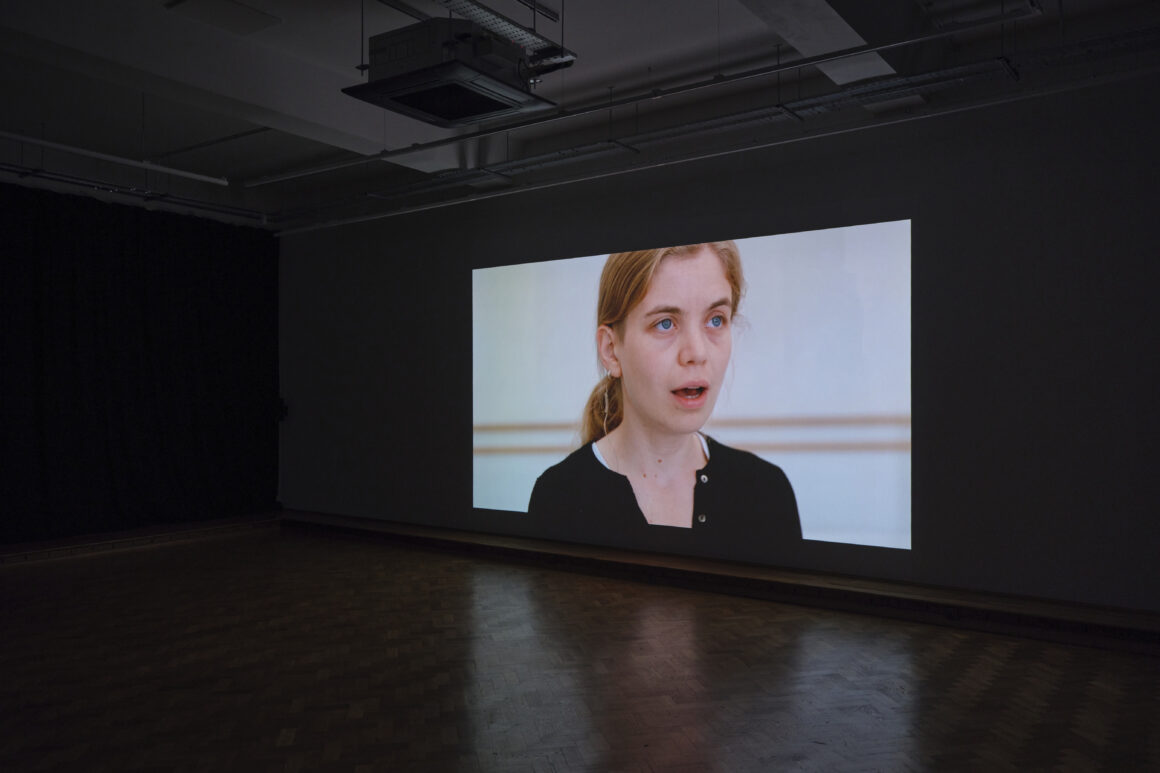
‘History of the Present’, installation view, Golden Thread Gallery; photograph by Simon Mills, courtesy of the artists and Golden Thread Gallery.
A collaborative work, History of the Present is a ‘total work of art’ or Gesamtkunstwerk in the Wagnerian sense. It utilises a range of elements, including composer Annea Lockwood’s tremendous soundscapes, personal experience, abstracted images, disembodied voices, and vocal recordings to express subjective realities. The artwork title reflects philosopher Michel Foucault’s view that the ‘history of the present’ should be the starting point for an enquiry into the past. In that spirit, the cinematography concentrates on images of contemporary Belfast, while Fusco’s libretto provides a present-time reflection on her experiences growing up in Ardoyne during The Troubles.
Working-class areas and the women of those communities bore the brunt of the violence and hardship of the conflict; yet in the grand narrative, such voices are rarely heard. As the libretto states: “All across Belfast, all of us, always watching in silence.” Saying nothing became a way of life, a survival strategy. Libretto, cinematography, and soundscape each work in unison to convey that lived reality. The spoken words from the libretto are all the more powerful because they are devoid of overt polemic or rhetoric. At one point, the disembodied voice delivers a quietly spoken litany of experiences of daily life, played out against a backdrop of existential threat. Especially moving is the recounting of the journey home from school, experiencing harassment and fear, and keeping quiet so as not to upset a parent. In this, and the other deeply affecting accounts of growing up in a war zone, the personal is political.
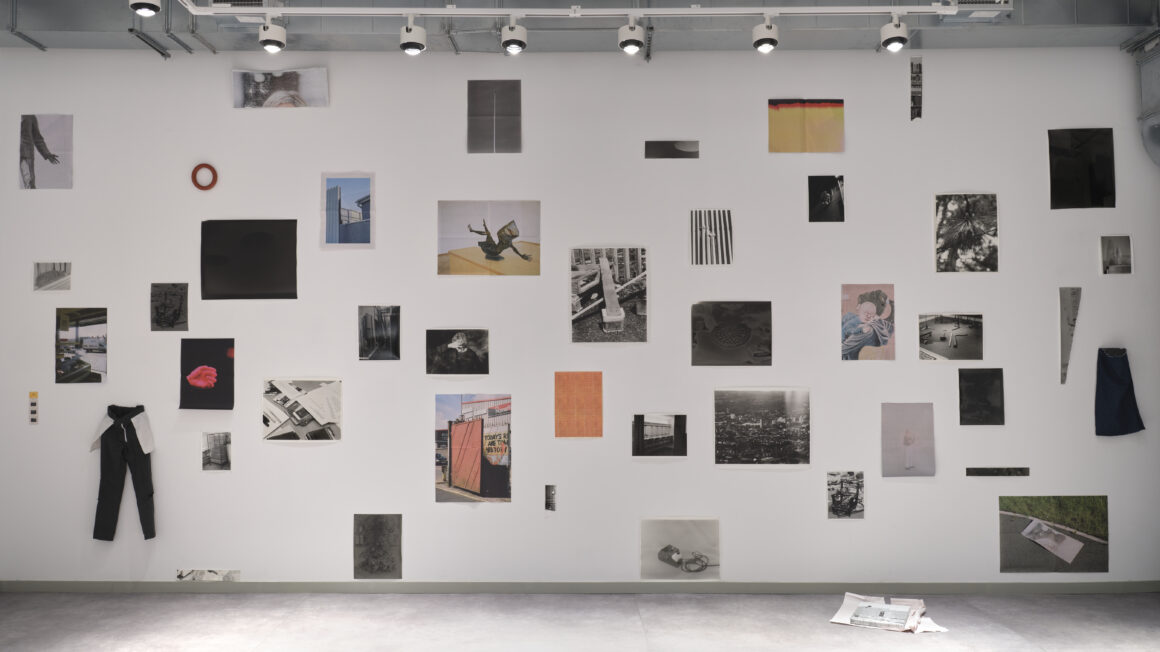
Salmon’s cinematography is sensitive and moving. Images of Ardoyne show contemporary daily life in all its ordinariness, yet the residue of the conflict is visible on people’s faces, and in the physical landscape. Its legacy is reinforced by images of the peace lines or peace walls – physical manifestations of sectarian division and distrust. An aerial shot of rows of identical red brick terraced houses, divided by an imposing peace wall, conveys this very powerfully. Equally impactful is the recurring motif of the red brick, “with its three cast holes, sustained by water and hardened by history” (as described in the libretto), which becomes a metaphor for both entrenched positions and human resilience.
There are several moments of visual beauty, such as a lingering image of the peace wall which has been given gradient colours by the opaque glass of a domestic backdoor. This and other images remind us of how The Troubles encroached on the most private of spaces and relationships.
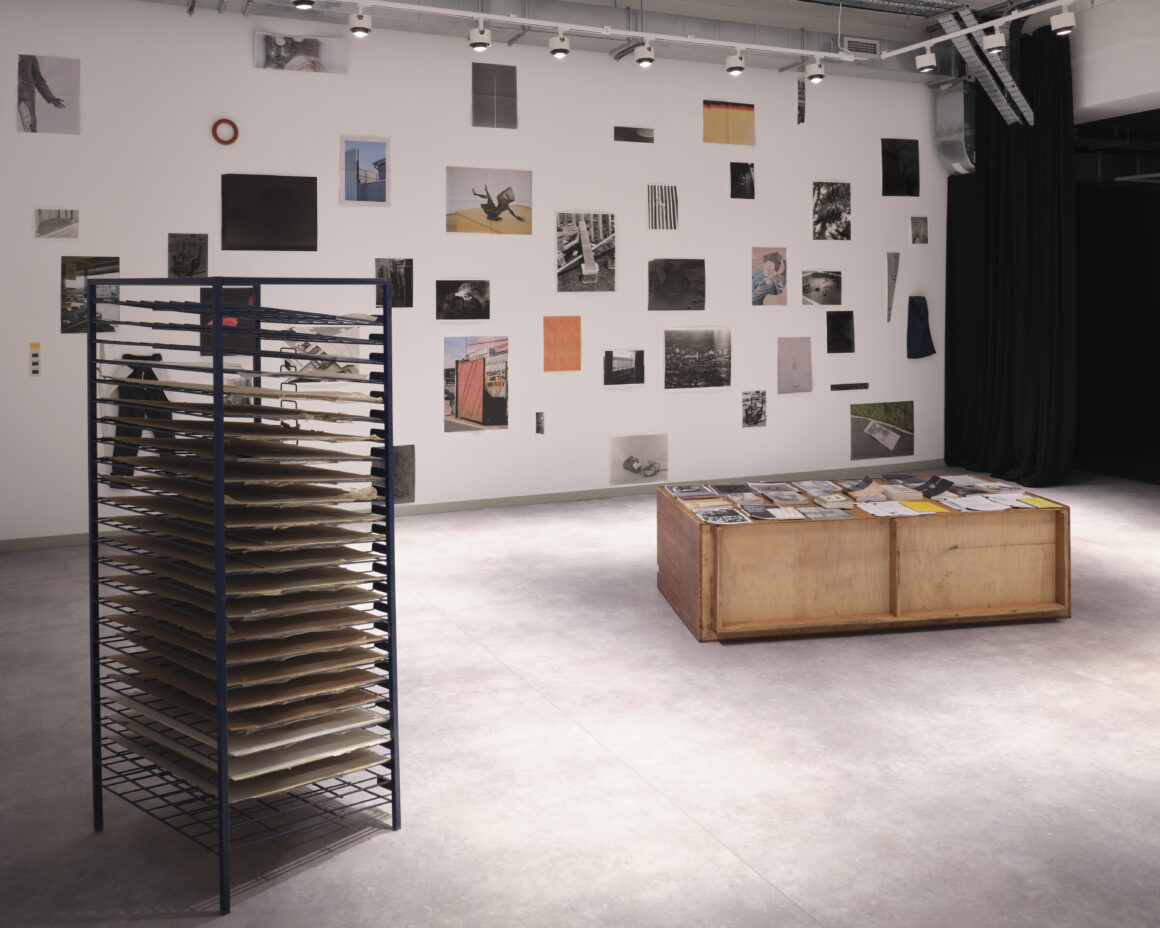
History of the Present ends with an image of Belfast Port at night, as the camera tracks slowly, almost imperceptibly, across the screen. A soothing voice gives directions that are fine and precise. The effect is calming – comforting, even – ushering a de-escalation of the heightened emotions so beautifully and sensitively evoked by this compelling work.
Mary Flanagan is a writer based in County Roscommon.

